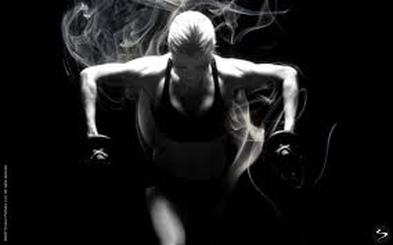 Fact: Humans need protein to grow and thrive.
Falsehood: That protein has to come from dead critters. Meet your new muscle-building diet. No animals were harmed in making it!
If there's one thing that most vegetarians hate, it's having someone talk about their dietary system like it's a problem that needs to be solved. So let's get this out of the way: Vegetarians can build muscle and strength just like meat-eaters. Got that? Good.
There are hundreds of millions of vegetarians in the world, and people choose to embrace this lifestyle for countless reasons—from religious, to nutritional, to simple personal preference. As anyone who has embraced this lifestyle can attest, it's not as simple as "don't eat meat."
Everyone from your grandmother to your favorite whey manufacturer is a potential threat to sneak animal products into your food, meaning you have to be diligent about doing your research in addition to minding your macros.
Need a roadmap? Here are four simple rules that vegetarian athletes should keep in mind in order to maximize their nutrition. Heed them, and you'll have the fuel you need to grow like a weed.
Rule 1 - Know Your Whey
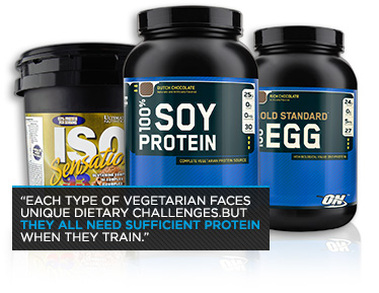 Meat-eaters may classify the world in terms of carnivores and herbivores, but vegetarians know it's not so simple. There are several types of vegetarians including: - Lacto-vegetarians (dairy is allowed)
- Pescatarians (fish is allowed)
- Lacto-ovo vegetarians (dairy and eggs are allowed)
- Vegans (No animal products of any kind are allowed)
Each variation presents its own set of unique challenges, as the people in these respective categories are well aware. But one thing they all need when they're training is sufficient protein. Without it, they put themselves at serious risk for subpar results and just generally feeling like a wilted piece of celery. What about whey and casein powders? Both are milk byproducts, so they're clearly off-limits to vegans and to strict pescatarians. But they should be A-OK for lacto- and lacto-ovo vegetarians, right? If only it were so simple. To separate milk into its component parts of curds (where casein and cheese come from) and whey, producers add an enzyme called rennet. There are vegetable and microbial sources for rennet, but the most common source is the stomachs of slaughtered veal calves. In other words, not so veggie-friendly. One easy way to tell if your protein is vegetarian is if it's kosher, because milk and meat products can't mix in a kosher diet. Unfortunately, most proteins don't include this information on their labels or websites. So if you want to know where a certain company stands, the best bet is to do your homework: search around, or call them up and ask.
Rule 2 - Explore Planet Protein
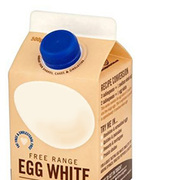 If the rennet dance sounds a little complicated, which is understandable, consider exploring other vegetarian protein sources. Luckily, there are plenty to choose from, most of which line up nicely against their animalistic competitors. Some of the most popular sources include:
- Egg protein, egg white protein, and liquid egg whites. All three offer a protein punch similar to whey protein, but are far simpler and more predictable when it comes to ingredients.
- Soy protein. Perhaps the most prominent vegetarian alternative to whey, soy proteins are similarly protein-packed but are incredibly low in fat and cholesterol. Soy generally offers more flavor options than other vegetarian proteins, but read your labels carefully, because some soy proteins contain milk and/or fish products.
- Pea protein. The lowly pea is riding high these days due to the "Dr. Oz Effect," but the TV doc was only stating what savvy vegetarians already knew. Pea protein is high in protein, easy to digest, cholesterol-free, and has a solid branched-chain amino acid profile.
- Hemp protein. Hemp seeds are packed with Omega-3s and high in magnesium and iron, to say nothing of their solid protein content. Plus, a serving also contains almost half your daily dose of fiber—remember that stuff?
Some manufacturers like Beachbody, offer their own designer veggie protein blends that mix various plant and grain proteins. There are plenty to choose from, so a little research can go a long way!
Rule 3 - Eat Well
I know it seems obvious, but most of us know at least one vegetarian who seems to magically survive on ramen noodles, fries, and sweets. Men's Health recently coined a term for these people: obesatarians.
Your vegetarian allies are begging you not to become one of these. Aside from the damage you do to yourself, you give the whole plant kingdom a bad name.
What's the alternative? Strive for balance! Include a barrage of fresh fruits and vegetables in your diet. These form the cornerstone of a healthy diet for herbivores and omnivores alike, and they offer incredible health benefits. Don't always fill up veggies and fruits (which is hard to do, by the way); most of your calories should come from dense foods—especially if you're trying to build muscle.
Hearty vegetarian protein sources that mix well with veggies: - Beans and legumes
- Nuts and seeds
- Tempeh
- Tofu
- Soybeans
- Seitan
If you're the type of vegetarian who gets full on things like brown rice, quinoa, potatoes, legumes, beans and lentils, nuts, seeds, nut butters, and avocados, you've given yourself a good chance to build some muscle. On the other hand, if you're a vegetarian who feasts mostly on salad, stir-fry, fresh fruit, and other vegetable-based dishes, you're likely falling short on your macro needs. For every vegetable you eat, pair it with a healthy fat and protein-packed side. This provides the balance of nutrition you need! Rule 4 /// Watch Out for Deficiencies
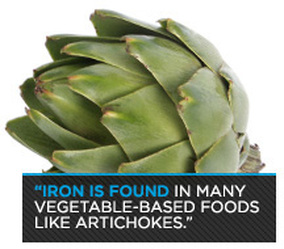 If you've been a vegetarian for a long time, then someone has doubtlessly already tried to warn you that an iron deficiency is likely to kill you in a matter of minutes. Is this a reason to give up and attack the nearest cow? Definitely not. But don't underestimate the degree to which micronutrient deficiencies can impact your health and well-being. Here are the four biggest threats to watch out for: 1. Iron Iron can be subdivided into two types, heme and non-heme iron. Heme iron is commonly found in red meat and absorbs easiest into the body, making it the variety most vegetarians fall short in. Non-heme iron is found in many vegetable-based foods including: - Dark, leafy greens like spinach, kale, and collard greens
- Dried peas
- Beans and lentils
- Artichokes
- Dried fruit: raisins, prunes, and black currents
Females are more likely than males to experience iron-deficiency anemia because they lose iron during their menstrual cycle. Alone, non-heme iron alone usually can't overcome iron-deficiency anemia, so consider supplementation. 2. Calcium Calcium is vital in maintaining strong bones and plays a crucial role in muscular contractions. Low calcium intake causes cramping during workouts, hindering performance and ability. In the long-term, it can also lead to thinning of the bones and osteoporosis. Dietary calcium is typically found in dairy-rich foods, so it's easy to find for lacto-vegetarians. Alternate sources of calcium fit for a vegan diet include: - Spinach
- Collard greens
- Kale
- Broccoli
- Almonds
Absorption rate varies in each of these, so if you have any doubts, consider supplementing with calcium to meet your nutritional requirements. 3. Zinc Zinc is an essential trace element that promotes proper growth and development across the body, and yet it's a mineral that many vegetarians neglect. Deficiencies can impact everything from appetite, to cognitive power and motor skills, to testosterone levels in men. The best zinc sources are generally animal products, so vegetarians need to prioritize this mineral. To combat zinc depletion, vegetarians should supplement with zinc products or consume natural sources like: - Pumpkin seeds
- Sesame seeds
- Almonds, walnuts, or macadamia nuts
- Fortified oatmeal or cereals
4. Vitamin B12 Vitamin B12 deficiencies can turn serious if not resolved immediately, creating a real area of concern for vegetarians. The type of B12 found in plant-based foods is not absorbed by the body as efficiently as vitamin B12 found in animal-based foods, so this is an area where even healthy vegetarians often miss the boat. ( NOTE: even meat eaters can have B12 deficiencies) Your best bet to overcome vitamin B12 deficiencies is to seek out foods fortified with adequate amounts, or supplement with vitamin B12 products. No matter what some meathead on a message board says, "vegetarian" does not have to equal "weak"—unless you let it! Meet your essential mineral and vitamin needs so you can feel strong and make the most of your healthy lifestyle. Shannon Clark
 With summer fast approaching, "beach-think" has set in and the current most-popular question is, how do I get rid of my gut?" If you think it's time to bring out those abs for summer, then this is the article for you! Gadgets And GimmickryThe science and art of eating for fat loss and muscle gain have become big business. Unfortunately, this big business, in the eternal quest to get paid, has taken the focus off excellent eating and excellent exercise regimens.10000001 Instead, with infomercials, marketing and advertising, and strategic alliances with the media (magazines, TV, etc), the diet and exercise industry has confused most people to the point that all they can do now is call up 1-800 numbers or jump on a secure server with their credit card ready. Some of these infomercials not only ignore the role of diet and exercise, they try to convince you those things aren't necessary when you buy their fat melting vibrating belts and magic pills. Why has this transpired? Well, the answer is simple. And for three easy payments of $19.95, I'll tell you. No, no, just kidding. How about a quote instead? "Throughout history, the difference between scientists and physicians on the one hand, and quacks and promoters on the other, has been that the scientists and physicians have attempted to show both what they knew and what they didn't know while the promoters saw the questions as simple and obvious, and always had all the answers." Therefore, it doesn't seem such a mystery why people buy into the gimmickry. Telling the people what they want to hear wins them over. T00. The problem is that while radical diets, gadgets, and pills may work in the short run, they often compromise an individual's health and well-being more than the extra fat does if they're overweight. This makes the cost to benefit ratio ridiculously low. The other problem is that these strategies don't typically work in the long run. So if you're trying radical new methods, it's a safe bet to assume that after the "treatment" is over, you'll likely go back to normal. Now personally, I love being lean, but I also enjoy my good health. And my focus remains on using the basics of good, natural food selection and an active lifestyle that includes regular, preplanned physical activity. I'm not a big fan of prepackaged meals, gadgets or magic potions. As revolutionary as it sounds, I believe you can get lean by manipulating your diet and exercise alone. So the purpose of this article is to provide a scientific basis for making good food selections, the real "secret" behind getting and staying lean. More specifically, I'll discuss the following: - Why a calorie is not a calorie
- Why a protein is not a protein
- Why a carbohydrate is not a carbohydrate
- Why a fat is not a fat
- How to choose your food wisely
Okay, let's dive in and prepare to "get your beach on." A Calorie Is Not A CalorieWhile the gurus and pundits of the past believed that all calories were created equal, and while much of the current dietetics herd still believes it, I'm here to tell you why it just ain't true. To do so, I'll focus on three main arguments: the Thermic Effect of Feeding (TEF), cross-cultural studies, and the effects of isoenergetic diets using different foods. The TEF, as I've said many times before, represents the additional caloric expenditure (above resting metabolism) that it takes to digest, absorb, and process the food you eat. Studies on the thermic effect of different foods have been important in describing the different effects of the macronutrients on metabolism. The TEF lasts from between one to four hours after eating a meal. When adding up the thermic effects from each of your meals, this extra metabolism represents between 5% and 15% of your total daily energy expenditure. Therefore, if your daily energy expenditure is 3,000kcal, about 150 to 450kcal of that comes from the TEF. Interestingly, different macronutrients tend to have different effects on metabolism. Welle et al. (1981) and Robinson et al (1990) demonstrated that during a normal six hour period of rest and fasting (basal metabolism), subjects burn about 270kcal. When eating a single 400kcal meal of carbs alone (100g) or fat alone (44g), the energy burned during this six hour period reached 290kcal (an additional 20kcal). Interestingly, when eating 400kcal of protein alone (100g) the subjects burned 310kcal during this six hour period (an additional 40kcal). Therefore, protein alone had double the thermogenic power vs. fat or carbs alone!Swaminathan et al (1985) demonstrated that during a normal fasted 90-minute period, both lean and obese subjects burned about 110 calories. When consuming a 400kcal, fat only meal (44g), the lean subjects burned 125kcal (+15kcal) while the obese subjects only burned 110kcal (+0Kcal). This indicates that while the lean can up-regulate metabolism when eating fat, the obese may, in fact, have a defect in their thermogenic response mechanisms for fat. When fed a 400kcal mixed meal (P+C+F), the lean subjects burned 130kcal (+20kcal) during the 90-minutes while the obese burned 125kcal (+25kcal) during the 90-minutes. These data demonstrate that mixed meals are more thermogenic than fat only meals and that lean people have a better TEF response than the obese. So now that you understand that different macronutrients (at the same energy intake) can alter calorie balance within a single meal, here's another interesting argument for the fact that all calories were not created equal. In a study by Campbell et al (1991), 6,500 rural and urban Chinese were compared to the US population norms for energy intake, macronutrient breakdown, and health. This is an important comparison due to the fact that obesity and cardiovascular diseases have reached epidemic proportions in North America while the prevalence is much lower in China. Check out this data on average nutrient intake: U.S.Energy - 30.6kcal/kg
Carbohydrate - 42% (224g)
Fat Intake - 36% (85.86g)
Alcohol - 7%
Fiber - 11g/day
Protein - 15% (80g)
% Protein from Animal - 70% (56g)
BMI (wt/ht*ht) - 25.8 ChinaEnergy - 40.6kcal/kg
Carbohydrate - 71% (504g)
Fat Intake - 14% (44g)
Alcohol - 5%
Fiber - 33g/day
Protein - 10% (71g)
% Protein from Animal - 11% (7g)
BMI (wt/ht*ht) - 20.5 It's interesting to note that while the Chinese have a much lower body mass index (as represented by weight in kg/height squared in meters) and a much lower prevalence of obesity and cardiovascular disease, they eat about 25 to 35% more food than we do!Now, the Chinese tend to be more active than we are, but when the numbers were corrected for activity levels, the differences remain! Looking at the macronutrient breakdowns, the Chinese are on a high-carb diet, no doubt. But they're not fat. And while their protein intake, by percentage, is lower, they do get nearly as much total protein, by gram amount, as we do. Perhaps we could take a lesson from the Chinese. Clearly not all calories are created equal because if they were, the Chinese would be fatter than we are! But instead, the average 100kg Chinese person gets to enjoy a 4060kcal diet while keeping his lean physique. I know, I know, that study is only epidemiological and therefore lacks some explanatory power, but stay tuned as I present two final studies to demonstrate that all calories were not created equal. In a study by Demling et al (2000), the researchers demonstrated that food choice and timing could be more important than total calorie intake. Before the study began, overweight police officers, eating about 2100 to 2300kcal per day, tipped the scales at 216lbs with 56lbs of fat mass (25% fat) and 158lbs of lean mass. They were eating about 74g protein, 380g carbs, and 56g fat. Since this is clearly a hypocaloric diet, they should've been losing weight. But they weren't. Unfortunately for these poor guys, they were eating only 10% of their calories at breakfast and a whopping 50% of their calories right before bed. In addition, 50% of their carb intake was sugar! After diet counseling, these guys still ate the same diet in terms of macronutrients, but they ate 70% of their calories during the active parts of their day and 80% of their carb intake was complex and low on the GI scale. At the end of twelve weeks these guys lost 3lbs of weight and 5lbs of fat while gaining 2lbs of lean mass. And this was without changing exercise habits! While these changes weren't huge, it's clear that food choices and timing make a difference. In another study by T-mag's own Doug Kalman et al (2001), Doug showed that a 1200kcal, high-protein (47%P, 36.5%C, 16.5%F) diet was more effective than a 1200kcal, moderate-protein (24.5%P, 48.3%C, 27.2%F) diet for fat loss. Subjects in the high-protein group lost 6.3lbs of body weight, 5.3lbs of fat weight, and only 1lb of lean weight. The moderate protein group lost 3.1lbs of body weight, no fat weight, and 4.5 whopping pounds of lean weight. Try telling these subjects that a calorie is a calorie! In the end, there clearly are ways to burn more calories and lose more weight while eating diets differing in macronutrient content but similar in energy intake. In addition, if you can believe it, there may even be ways to eat more food while staying leaner. Just ask the Chinese. A Protein Is Not A ProteinIn this section, I'd like to demonstrate that not all proteins were created equal. Specifically, I'll briefly discuss whey and casein protein, fast and slow protein, animal and vegetable protein, cod/fish protein and soy protein. The topic of whey vs. casein has been discussed ad nauseum lately so rather than belabor this issue, I'll quickly summarize a few studies. Demling et al (2000) compared two groups on a 2100 to 2300kcal diet containing 143gP (26%), 286gC (52%), and 49gF (20%). Both groups weight trained for twelve weeks but received 75g of their daily protein intake from either a whey-based drink or a milk-protein isolate drink (80% casein, 20% whey). At the end of the study, the milk-protein isolate group lost more fat (15.4lbs vs. 9.2lbs), gained more lean mass (9lbs vs. 4.4lbs), and gained more upper and lower body strength than the whey group. It appears that milk protein isolate ingestion, when on a training program, may be a better way to enhance fat loss and muscle gain.Lands et al (1999) showed that when supplementing with 20g of whey or casein for three months, the whey group had up-regulated their antioxidant defense systems and had increased performance in an anaerobic exercise task. The casein group didn't improve on any of the above parameters. Therefore whey may be better for antioxidant protection. Since the fast vs. slow debate focuses on whey (fast) vs. casein (slow), let's address that research here. In studies by Boirie et al (1997) and Dangin et al (2001), it was shown that whey protein is better for up-regulating protein synthesis while casein protein is better for down-regulating protein breakdown. The take-home message from these studies is that a milk protein blend or a supplement containing whey + casein may be your best bet for body composition improvements. Next up, what about those kooky vegetarians? Well, in comparing an omnivorous diet (meat containing) with a vegetarian diet, Campbell et al (1995, 1999) demonstrated that strength gains and body composition improvements are impaired when meat is removed from the diet. In their studies, subjects weight trained for twelve weeks while consuming a 2300kcal diet consisting of 70-90gP (12-15%), 267-317gC (49%), and 82-87gF (7-11%). The only difference between groups was the fact that one group ate a meat-free diet while the other group ate meat. At the end of the twelve weeks, the meat eaters lost 2.8lbs of fat while gaining 3.74lbs of lean tissue. The vegetarians, on the other hand, lost no fat weight and lost 1.76lbs of lean tissue. Regarding fish in the diet, Lavigne et al (2001) demonstrated that cod protein was better than soy or casein for increasing muscle glucose sensitivity and for preventing insulin resistance in high-fat fed rats. Since codfish has a favorable omega-3 profile, the researchers duplicated their work using only the protein component of cod and the benefits remained the same. This indicates that eating fish may improve your carbohydrate sensitivity and ultimately your body composition and these effects may be independent of the fatty acid profile. Finally, Lohrke et al (2001) showed that growing pigs fed a diet consisting of soy as the only source of protein had lower body weights, amino acid imbalances, increased cortisol levels, and increased muscle breakdown. The casein-fed pigs grew normally. This study indicates that a diet containing exclusively a low quality protein (soy in this case) may interfere with normal growth and development. So, how do we use this information to our advantage?Well, since different protein sources confer different benefits, your best bet is to eat some fish protein (cod, salmon, tuna), some lean meat protein, and some milk protein isolates or whey/casein blends each day. Eating from a limited list of protein sources is a big mistake. Depending on their individual needs, my clients typically eat a different protein source with every meal so that by the end of the day they've gotten complete protein from egg whites, fat free cheese, milk protein isolate shakes, cottage cheese, salmon or tuna and lean beef, not to mention the incomplete sources like mixed beans and mixed nuts. Summary Of Part 1- With all the media hype out there, the key to staying lean and mean is still diet, specifically, good food choices.
- A calorie is not a calorie because the macronutrient content of each meal affects the body's response to the feeding. That basically means you could change your body composition by eating the same amount of calories each day, but making different food choices. Meal timing also plays an important role.
- A high protein diet may be better than a moderate protein diet for fat loss.
- A protein is not a protein because different kinds of proteins affect the body in different ways. Milk protein isolate (80% casein, 20% whey) may be better than whey alone if your goal is fat loss. Whey looks like it's better for antioxidant protection, however.
- A supplement containing whey + casein may be your best bet for body composition improvements.
- Eating fish may improve your carbohydrate sensitivity and ultimately your body composition.
- Soy still sucks as a primary protein source
- John Berardi
There may be benefits to working out in heels, but those leg-lengtheners can also be bad news for your body. Constant heel-wearing can lead to a host of problems, from inflamed nerves to long-term joint problems. Scary stuff, right? I'm a high-heel fan, but after listening to a long explanation (read: lecture) about the horrible effects of high heels from my trainer last week, I've been trying to combat a bit of the damage. Read on for four important types of strengthening and stretching exercises for anyone who is head over heels for high heels.
- Calves: Hoofing it on heels leaves your calf muscles in a shortened position, which can mean weakened muscles when the heels come off. Remember to stretch after wearing heels in order to give those muscles relief. The classic yoga pose Downward Dog lengthens the calves, as do these simple stretches.
Find three more important areas every high-heel wearer should strengthen after the break. - Ankles: Walking on stick-thin stiletto heels is no small feat. To help prevent a tumble and serious injury, incorporate simple exercises that strengthen your ankles, like walking on your tiptoes and doing squats on the BOSU.
- Balance: The lift you get from wearing heels also challenges your body's sense of equilibrium, which can mean a lot of muscles are working to keep you upright. This can lead to more pressure on your lower back, so add a few one-legged yoga moves to your morning routine, like Tree Pose, or trace the alphabet with one foot while standing on the other leg; this exercise strengthens the muscles around both ankles. Also focus on ab-strengthening exercises to help your body reposition itself correctly when you've been strutting around in those four-inchers.
- Achilles tendon: If you're a regular heel wearer, then switching abruptly from heels to flats can cause Achilles tendonitis — when your Achilles tendon, which attaches your calf muscle to the heel, becomes inflamed. Make sure you keep your Achilles tendon happy with a few strengthening stretches like this one: stand on a step or curb with your heels hanging off, and rise up and down on your toes.
Toning, or the appearance of lean muscle, is one of the most common goals of all gym goers. Lean muscle is appealing. It just takes a short trip through the check-out lines at the local grocery store to see all the toned, lean muscled looks of all the magazine cover models. Toned, lean muscle also has its health benefits as opposed to simply gaining muscle in bulk. Here are the essentials to helping you reach your goals of adding definition to your physique.
1. You Are What You Eat
First and foremost, let's make this clear: it doesn't matter if you do thousands of abdominal exercises, if you don't tailor your diet for the appearance of lean muscle, you won't have that washboard stomach you want. This is one of the most important principles to getting muscle tone. The lower your body fat percentage is, the more defined and vascular you will appear. Eating take out three times a week will only derail you on the path to getting that muscle tone, no matter how hard you work in the gym.
2. How You Lift It
The next key to adding definition and tone to your physique is ensuring that you have the proper training principles in place for maximum results from your workout. High-intensity training is the way you should approach your workouts to get maximum definition. You should be performing exercises for two sets for approximately 18 to 20 repetitions for a weight you can manage those 18 to 20 times. You may also want to lift in a high-intensity circuit, completing one set of 12 to 15 repetitions sequentially with little rest in between. Complete a lap of 10 to 12 exercises, and repeat for two more laps. You should be training for strength at least two to three times per week. This principle is commonly known as a "low weight, high reps."
3. Car-Di-O!
One of the most important parts--but the one that gets overlooked the most--to maintaining a good, toned physique is adequate cardiovascular training and conditioning. Performing enough cardiovascular training will help you maintain peak physical condition. Think of a prizefighter in boxing or mixed martial arts. They put in miles and miles of "roadwork," training their cardio endurance. Come fight time, they are some of the most well defined athletes on the planet. You may want to apply the same high-intensity principle to cardio training. Usain Bolt's physique is incredible, yet he is not known for his long-distance running training.
Applying these three simple principles to your workout in the new year will help in achieving your goal of a toned, defined physique.
New sneakers, high-end equipment, private classes—in your quest to drop a few pounds, you may find your wallet getting thinner, too. But it is possible to get in shape without going broke. Here are a few get-fit tips that can get you results without costing you a fortune. If you can't splurge on classes . . . DO A WORKOUT DVD. You can get a solid workout in your own living room for the price of a private yoga lesson or a few dance classes. (And, ahem, we know where you can find a few good DVDs.) The trick is to stay motivated when your comfy couch is beckoning from a few feet away. These tricks can help: - Treat your workout time like an actual class. "Schedule time in your day to work out, and stick with it," says JJ Virgin, a Certified Nutrition Specialist and Certified Health and Fitness Instructor.
- Even if you don't feel like pushing yourself to the limit, at least push yourself to start. "Back in the day, Beachbody's motto was 'just Push Play,'" says Steve Edwards, Head of Fitness and Nutrition Development at Beachbody®. "Once you're actually doing the workout, most people figure they might as well put some effort into it."
- Invite a friend. "A workout buddy provides accountability and makes it more fun and interesting," Virgin says.
If you can't splurge on a trainer . . . HOLD YOURSELF ACCOUNTABLE. Personal trainers provide structure and accountability to your fitness regimen. But if it's out of your budget, here's how you can reap the same benefits on your own: - Join an online community. One recent study found that women who worked out with a virtual exercise partner exercised for twice as long as their solo counterparts. The Team Beachbody® Message Boards are a great place to find motivation from fellow fitness buffs.
- Get high-tech help from goal-tracking apps and websites that allow you to monitor your progress. Team Beachbody's SuperGym® is an online health club where you can plan and track workouts, find a fitness buddy, and get advice and motivational tools.
- Take a picture. "The motivational power of 'before' photos is massive, because you're going to improve," Edwards says.
"Even when you don't feel your training is going well, you can look at where you once were and it almost always gets you moving."
If you can't splurge on a gym membership . . . HIT THE PAVEMENT. Think of the great outdoors as an enormous, free cardio room. Here are a few ways to get your heart pumping—no equipment necessary. - To torch fat, do outdoor intervals."Run up a hill or stairs at top speed for up to a minute, then walk back down at your normal pace to catch your breath and recover," Virgin suggests.
- Check a map. Your local geography might offer a unique workout opportunity—are there mountains to climb, oceans to swim, or a stadium for stair running?
- Go back to the DVD rack. One more benefit of workout videos: Many of them don't require special equipment. "Some, like INSANITY®, use no equipment in the entire program," Edwards says. "Yoga is another great workout that needs no equipment, but still offers many options."
If you can't splurge on fitness equipment . . . GET CREATIVE. You don't need to invest in a full set of dumbbells or a weight bench to do resistance training. Here's how to build muscle on the cheap. - Turn everyday household items into makeshift equipment—canned soup cans double as light weights, furniture can add instability, and a milk crate can work as a step. The Message Boards are the perfect place to find DIY ideas.
- If you buy a pair of weights, go heavy. "Get the heaviest set of dumbbells you can lift in good form," Virgin says. "You can do a lot with that basic equipment."
- Buy bands. "Exercise bands are cheap, light, and take up almost no space in your house," Edwards says. "All of our weight training workouts provide options to use bands—we do this to eliminate excuses." Plus, they're ideal if you want to stick to your workouts while traveling.
If you can't splurge on a nutritionist . . . LEARN TO SHOP SMART. With a little pre-planning, you can eat well without racking up a huge grocery bill. Here's how to find nutritious foods that won't blow your budget. - Stick to the basics. "Shop seasonal produce, lean meats, and other foods on the periphery of your grocery store," Virgin says. The center aisles are usually where packaged and processed foods are kept. Watch for sales on meat, and buy nuts or beans in bulk.
- Get informed. "Nutritionists worth their salt tend to write books. Read those," says Denis Faye, Team Beachbody's nutrition expert. Michael Pollan's Food Rules is a good place to start.
- Plan your meals ahead of time so you're not winging it when you hit the aisles. Look for apps that help you plan meals and track deals. "Make a list and stick to it—don't be swayed by unhealthy sale foods," Virgin says. And to prevent impulse purchases, she adds, "Don't go to the grocery store hungry."
By Kara Wahlgren

Exercise makes us feel great. It makes us less hungry. It helps us perform everyday tasks better. Besides our health and the way we look, feeling great, being less hungry, and performing better are exactly the reasons we put ourselves through exercise. However, en route to ultimate fitness, there are some hurdles we all need to clear. Mainly, they include being faced with the opposite of our intended goals. Enter the trilogy of grumpiness: getting sore, slow, and hungry. We tend to look at these as negatives, but how about a little New Year's spin? You want these feelings because they're clear signs your program is working.
Sore, Slow, and Hungry
Before we analyze why you need to embrace "going backward," let's answer the obvious question: why would we design this type of program? Certainly, there are exercise programs that don't put you through torture. Could we have chosen such a path with P90X®?
The answer is that programs lacking this trilogy don't provide you an incentive to get in top shape. In the early stages of any exercise program, it's possible to structure the schedule and diet around making small improvements. I call this the Curves® template. You push your body above its normal output, though just barely, and you keep it there. If you are greatly deconditioned, it will yield improvements. This approach doesn't hurt, and frankly, it helps people who've never exercised—mainly due to the mental boost they get from feeling they can exercise. It's a nice alternative for some people. But let's be realistic. None of them would sit through a P90X infomercial, much less be inspired by it.
The Curves template is what we would call a foundation phase of training for someone who has never exercised. The next step would be one of our programs, like P90X or Slim in 6® (these programs also work on the Curves template because you can choose modified variations). The upside with this method is that each day you leave the gym feeling better than when you walked in. The downside is that you'll never have the body of a fitness model. To achieve a higher level of fitness, you need to periodize your training and eventually stare into your Nietzschean abyss. That which doesn't kill you makes you stronger is more than a cliché with P90X—it's your life.
Getting Sore
Soreness is the easiest symptom to understand. Most of us have been sore at some point. It happens anytime we do something physical that we're unaccustomed to. From yard work to a pickup game with your old team to a marathon shopping spree, when you push your body beyond what you do in your normal day-to-day activity, you get sore. This is true even if you used to do the said activity all the time. In fact, that generally makes it worse, because you still hang on to the muscle memory of how to do the activity, which means you can really put the hurt on if you don't have the requisite fitness base.
Most soreness comes from the breakdown of fast twitch muscle fibers. Our bodies have both slow twitch and fast twitch fibers. Slow twitch fibers have a low recruitment factor, which simply means they get fired up at low outputs. Fast twitch fibers have a high recruitment factor, meaning it takes something more intense to get them going. A simple example would be raising your fork to your mouth, which requires slow twitch fibers, compared to raising a heavy barbell over your head, which requires fast twitch fibers. Furthermore, we all have some extra fast twitch fiber for emergencies. When you run from a bear, you're engaging these, which is why you're likely to run faster than you ever have before.
Fast twitch fibers are repaired much more slowly than slow twitch fibers. You can pretty much keep shoving food into your mouth and never get tired. When you do get tired, you'll be able to resume the activity quickly. Lifting a barbell over your head will wear you out, and it will take some time before your body is able to do it again. The more weight you add, the quicker you'll get tired and the longer it will take before your body is ready to do it again. And once you've escaped the bear, you'd do well to avoid him for a couple of weeks. Those emergency fibers you've thrashed will take that long to recover.
Hypertrophy means muscle growth. Almost all training programs target this, even weight loss programs, because changing a body from rotund to svelte requires you to lose body fat. And the quickest way to lose body fat is to gain more muscle. Muscle requires more work from your body, even at rest, so you're body will take the nutrients from the foods you eat and store them in muscle tissue rather than adipose (or fat) tissue.
To create hypertrophy, you need to overload your muscle fibers progressively to keep breaking them down. As you get fitter, you engage higher-threshold muscle cell motor units to keep the overload coming. Breaking down exactly the number of muscle cells your body can replenish right away is nearly impossible. This means that to advance your level of fitness, you are going to break down more muscle fibers than you intended. When this happens, you get sore.
Furthermore, the more varied the exercise you do, the more you'll find areas where your body is out of balance. This means some muscles are stronger than others. When you do new exercises, your stronger muscles are forced to do extra work as the weaker ones catch up. This results in both the strong and weak muscles being overworked while they sort out the balance problem. This is the first step of Muscle Confusion™, and as you know, there is no shortage of it in P90X.
Getting Hungry
"I heard I would get less hungry and all I can think about is eating" is a common sentiment expressed on our Message Boards. The reason is somewhat obvious—our entry-level programs have low-calorie diets, not to mention restricted diets. Most of these people are simply craving the junk foods we've had them cut out.
But Xers get hungry too, and they're usually eating enough calories. This is because your body cries out for nutrients when it's in breakdown mode, even when you've eaten all you can. Learning that this craving is normal will greatly help your success curve.
When your body is craving nutrients, you want to feed it. However, under the type of duress a hard program creates, you can't possibly give it enough nutrients. Many of us try. We eat and eat. And while eating can help ease the mental anguish your body is going through, you can't put all of these calories to use, and some will get stored in fat tissue.
When your body is hungry, supplements are your best friend. Most have very few calories and a lot of nutrients. Some have targeted nutrients, which basically means they're designed for nutrient efficiency. Results and Recovery Formula™ is a prime example. Although its nutrient profile is unsuitable for many situations, during or after exercise, it is the most efficient food for your body. Using Results and Recovery Formula as directed will help you get less sore, and hence less hungry. Shakeology® also shines during an exercise program. While healthy anytime, drinking Shakeology while your body's in flux will enhance your ability to use all of Shakeology's nutrients effectively.
But no matter how well we strategize, we're all going to get hungry at some point in our programs. So much so that staying hungry is a metaphor for the bodybuilding lifestyle. In the film Stay Hungry, a bodybuilding champion (played by Arnold Schwarzenegger) sums this up with the line, "I don't want to get too comfortable. I'd rather stay hungry."
A note from expert Denis Faye: "If you're hungry even though you've eaten all your calories and you're trying to lose weight, your first course of action is to fight it. Hunger doesn't necessarily mean you need food. It just means you're used to food. However, if you're going completely nuts, then you want filling foods with few or no calories. Herbal tea is good, so is broth or veggies, as long as they're fresh and raw. If you must eat something more substantial, I'd opt for a straight protein, like chicken or egg whites. It's not going to impact your blood sugar as hard and it's not all that yummy, so you know you're not just comfort eating."
Getting Slow
This is the hardest condition to conceptualize but the easiest to explain. During hypertrophy, your muscles are growing. Growing muscles are a bit like a growing person. Just as you learn how to grow into a developing body, you need to learn how to use new muscles. During the hypertrophy stage of your exercise program, your muscles are "big and dumb," like the old-school concept of the "musclehead."
Larger muscles have a greater capacity for strength than smaller ones. A large muscle isn't necessarily stronger, but if trained properly, it will become stronger. Muscular efficiency (or absolute strength) is what gets targeted in the latter stages of a training program. Doing low repetitions, along with eccentric and plyometric movements, is all about teaching your muscles efficiency—essentially, the ability to recruit high-threshold muscle cell motor units.
We'll talk more about strength training in another article. Today, my point is to explain the rationale behind what I call "getting slow." While your muscles are growing, your ability to move quickly lessens. This is why athletes do all of their body-altering training in the off-season. When you start to feel slow, it's a sign that your program is working. Just remember that you'll want to increase your intensity and whip those big lugs into shape later on.
Wanting to experience the trilogy of grumpiness should help you during your next program or training cycle. But remember that these are stages, not chronic conditions. You should only experience them early in a program or new cycle of training. If you aren't experiencing them at all, it means you're ready to ramp your training up to the next level. But if they persist beyond 4 weeks, you're overdoing it and risk overtraining. You may also experience them each time you transition to a new phase. In this case, though, they should be gone before you move into the next phase
Article by By Steve Edwards
IS THE NUMBER ON THE SCALES GETTING YOU DOWN? Ladies, I know we all have our own stories and we’re all here for different reasons. But I see A LOT of girls desperately trying to see lower numbers on their scales as fast as possible and as easy as possible almost every day. The only thing keeping them going is the hope that one morning they’ll stand on the scale and their “ultimate goal weight” will be staring them in the face. I'll admit it, I've been there done that. There would be days I would feel awful about myself because the scale didn't go down "enough" ( because apparently .8 is not enough ) or the scale went up .2lbs... I'll admit it I struggled with eating problems as a teen. I've been in those shoes, I know how low it can take you. I am here to say ENOUGH! You are all STRONG, BEAUTIFUL, INTELLIGENT WOMEN! ditch the scales!! or at least stop accessing over them! I believe, and yes this is my personal opinion, that what should be staring you in the face, is yourself in the mirror. After all scales can miss function, but your eyes work don't they? Check your progress in the mirror, how your clothes fit, compare old photos with new photos, happiness, how much energy you have, how strong you are mentally and physically, there are a million other reasons I am sure you can all think of. Different weights look different on every single body. Just because your favorite celebrity has a bangin’ bod at a weight, doesn't mean it’s going to look fantastic on you too. Don’t let numbers define you. Please. Don't believe me??? Heres some proof from Back on pointe
So do you think she looks better at 123lbs or 137lbs. I am going to go for 137lbs. Work towards your goals and don't give up! Feel like giving up?!?! Send me an email and we will get you back on track!
|







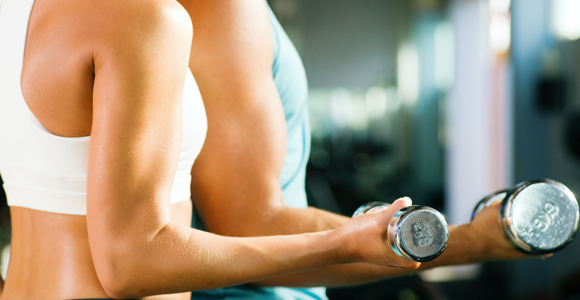


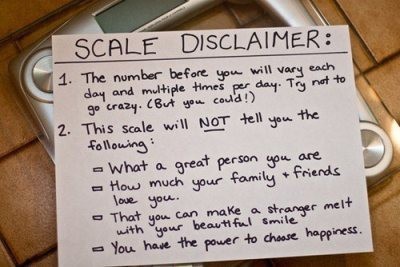
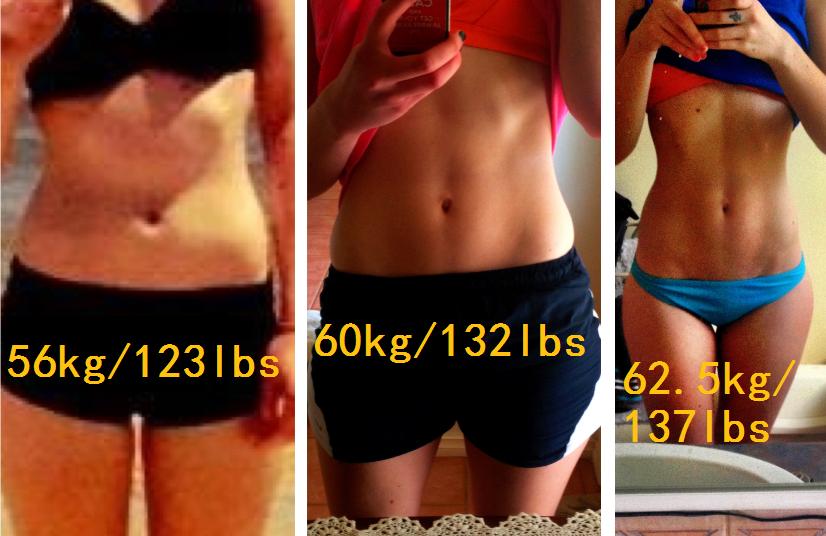

 RSS Feed
RSS Feed